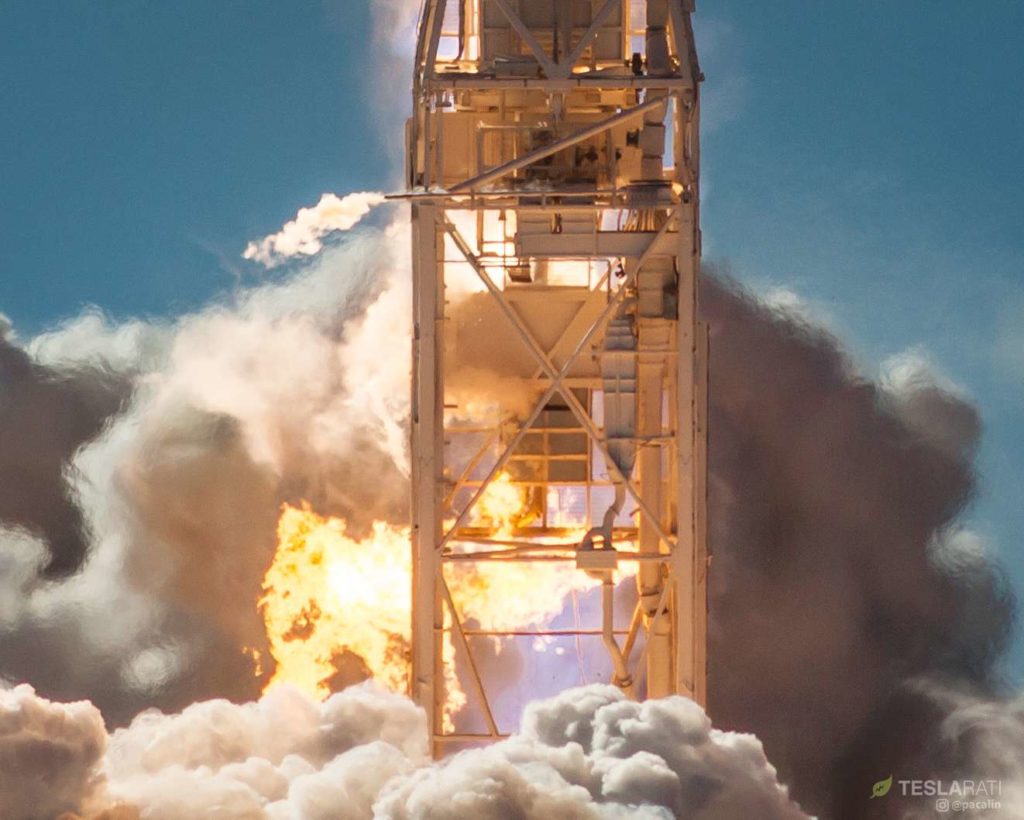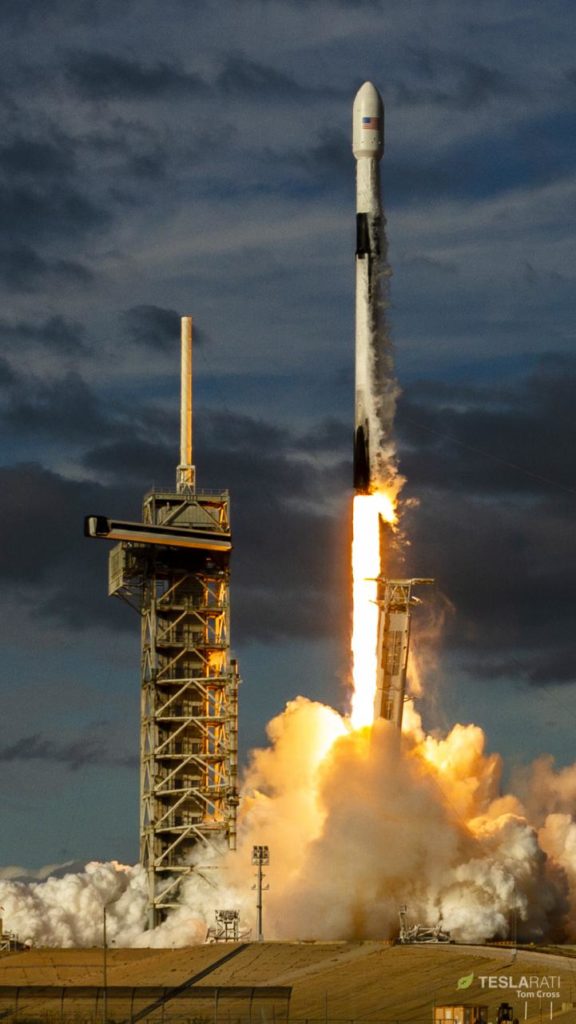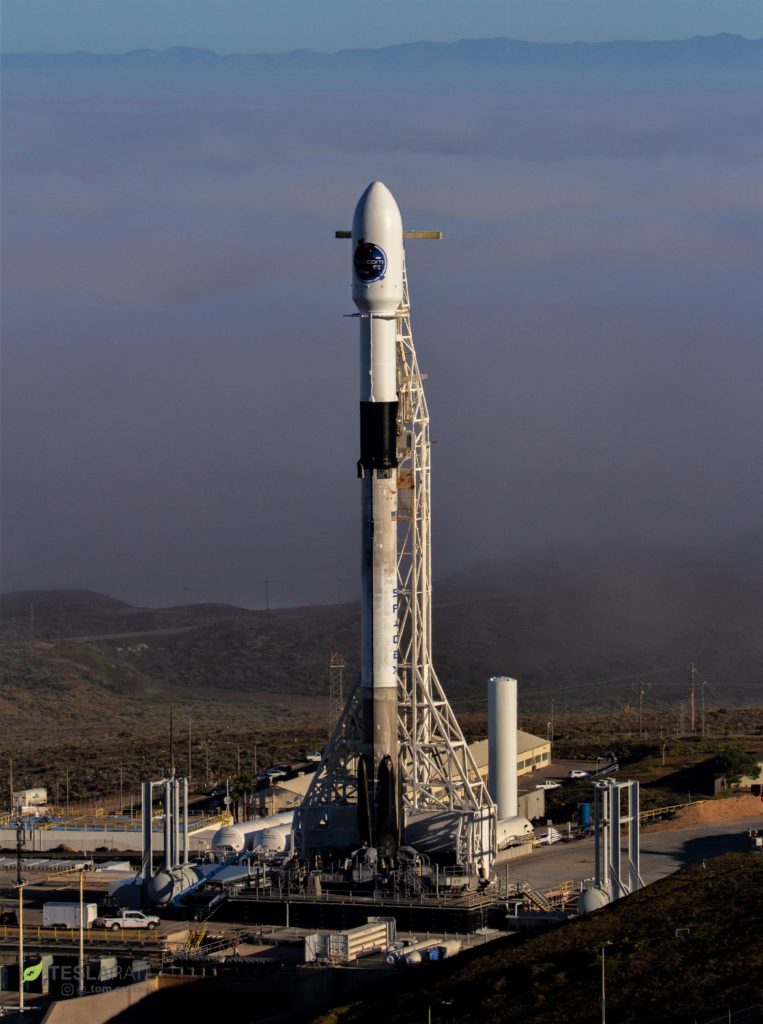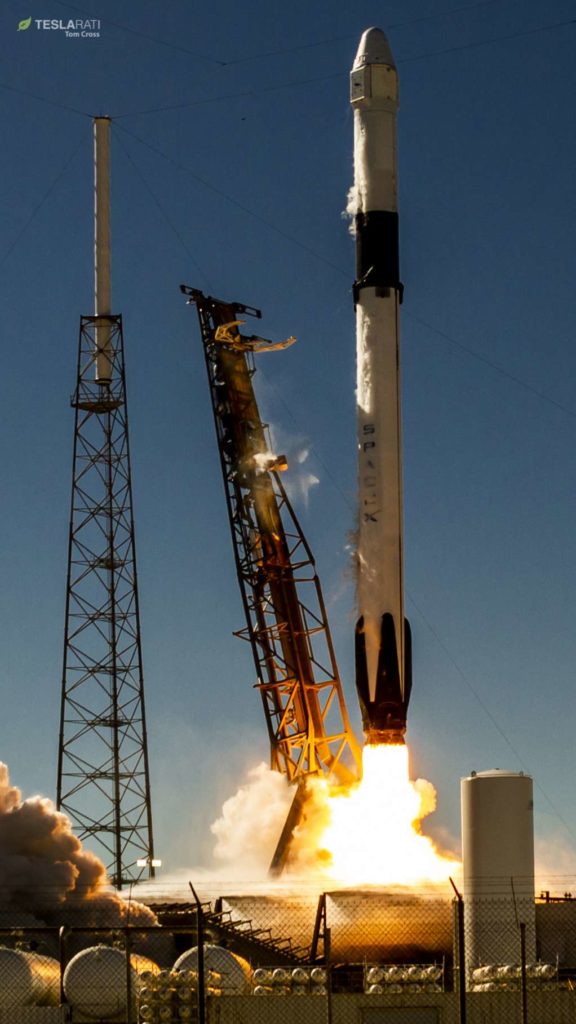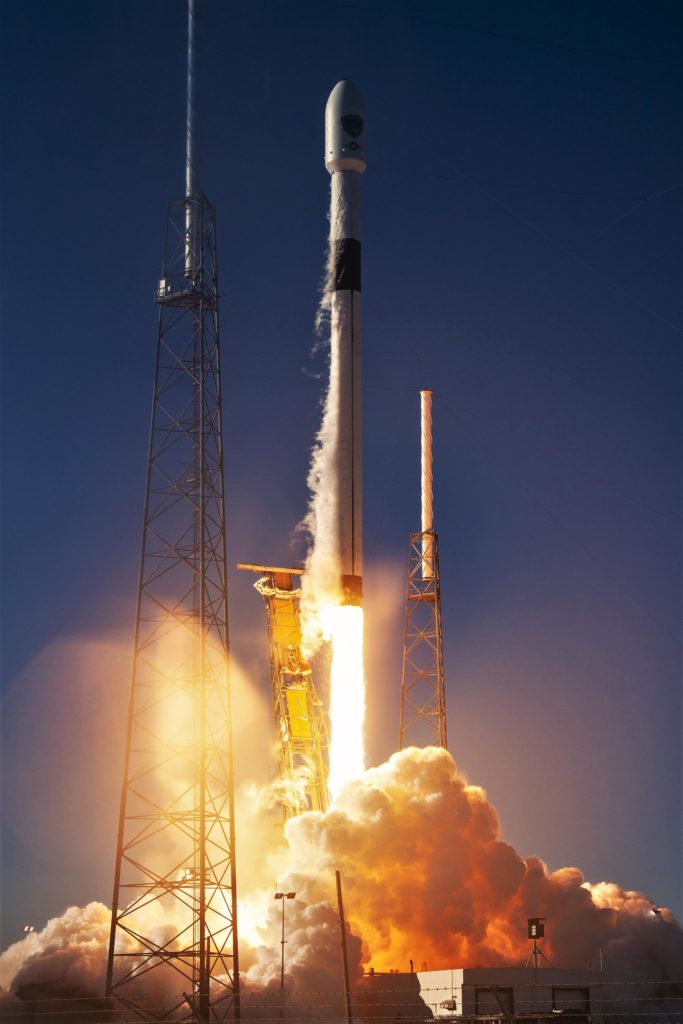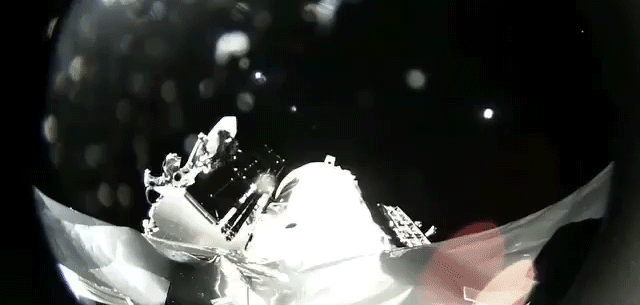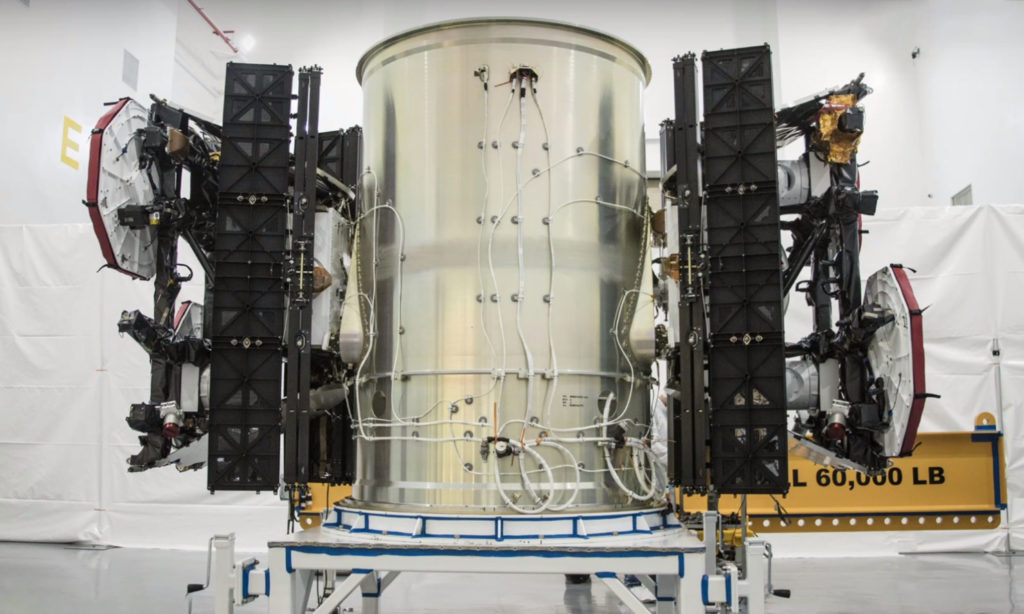

News
SpaceX hints at mystery Falcon 9 missions with record breaking launch target
Speaking at the 2019 Smallsat Symposium, SpaceX Vice President of Commercial Sales Jonathan Hofeller announced that the company will try to break the launch record it set last year in 2019. That record stands at 21 successful missions, while President and COO Gwynne Shotwell stated in a May 2018 interview that she was anticipating 24-28 launches in 2018 and ~18 in 2019.
Ranging from Crew Dragon transporting astronauts and a duo of Falcon Heavy missions to perhaps ten commercial satellite launches, 2019 will undoubtedly be full of major events for SpaceX. However, SpaceX’s publicly-available launch manifest suggests that there will be no more than 18 government and commercial missions ready for the company to place in orbit before 2019 is out, implying that Hofeller may be hinting at launches that are not yet public.
Last May, SpaceX Prez Gwynne Shotwell was projecting 24 to 28 launches for 2018 but more like 18 for 2019. 21+ may be an “aspirational goal,” unless they’re counting Starship Hopper: https://t.co/RDbdPLA2Z7
— Alan Boyle (@b0yle) February 7, 2019
In just the last two years (24 months), SpaceX has successfully launched Falcon 9 and Falcon Heavy an astounding 40 times, averaging approximately one launch every 2.5 weeks. In 2017, SpaceX demolished its own prior cadence record with 18 launches, a record the company’s exceptional workforce summarily proceeded to beat in 2018 with 21 successful missions launched. A vast majority of those 40 missions (27 to be precise) were the result of competitive, commercial contracts that SpaceX has been extremely successful at winning, thanks largely to the nearly unbeatable pricing of Falcon 9 and Heavy.
Much like most other launch providers, SpaceX plays its manifest extremely close to the chest, rarely revealing more than a blanket status update. For example, SpaceX’s website states that it has “has secured over 100 missions to its manifest, representing over $12 billion on contract.” Thanks to the general drought of official manifest information, the closest approximation to a real SpaceX manifest has traditionally been maintained by members of spaceflight fan communities like /r/SpaceX and NASASpaceflight.com, using the best aspects of organized crowdsourcing to create an extremely reliable snapshot of launch contracts scheduled within ~24 months.
However, compared to SpaceX’s claimed manifest of 100+ missions at an average cost per launch of ~$120M (twice Falcon 9’s $62M list price), crowdsourced SpaceX manifests – based on mostly public information – show fewer than 60 possible launch contracts between now and the end of 2024, a majority of which are for the US government (Crew and Cargo Dragon, Air Force GPS launches, and a few NASA spacecraft). Given SpaceX’s confident use of “secured” and “on contract”, the massive gap between public manifests and SpaceX’s claims leaves more than 40 launches almost completely in the dark.
- Falcon 9 B1046 lifts off for the third time with Spaceflight’s SSO-A rideshare mission. (Pauline Acalin)
- Falcon 9 B1047 lifts off from Pad 39A, November 2018. (Tom Cross)
- Falcon 9 B1048 appears out of the fog prior to its second orbital-class launch. (Pauline Acalin)
- Falcon 9 B1050 is seen here just after liftoff. GPS III SV01’s Falcon 9 will feature no grid fins or landing legs. ☹ (Tom Cross)
A Big Falcon Mystery
Hofeller’s Feb. 6th comment is thus just a tiny taste of SpaceX’s potential mystery manifest, indicating that the company has more than 21 payloads to launch in 2019 while public info reveals no more than 17-18 likely to be ready. Where, then, might Hofeller find an extra 4-5 missions that public observers would not normally be aware of?
The simplest answer least reminiscent of a conspiracy theory is Starlink, SpaceX’s global constellation of at least 4425 satellites. While it would be an extraordinary achievement, Reuters reported in October 2018 that CEO Elon Musk had gone as far as firing multiple senior managers of the young satellite program to install new managers with a singleminded goal: begin launching operational Starlink satellites by mid-2019. A little over six months after Musk’s Starlink shake-up, SpaceX has pivoted towards rapidly building and launching around ~1500 first-generation satellites with more conservative capabilities to lower orbits relative to the original Starlink specification.
- One of the first two prototype Starlink satellites separates from Falcon 9’s upper stage, February 2018. (SpaceX)
- SpaceX’s first two Starlink prototype satellites are pictured here before their inaugural Feb. 2018 launch, showing off a utilitarian design. (SpaceX)
SpaceX also received a major Starlink contract from the US Air Force Research Laboratory worth almost $29 million, $19.1M of which was dispersed to SpaceX in October 2018. As of late 2018, the company’s Starlink branch had already pivoted toward ramping up production of the first several batches of operational Starlink satellites. According to a number of employees, SpaceX’s first two Starlink prototype satellites – known as Tintin A and B – were a programmatic success and continue to operate in orbit today after proving out a number of critical Starlink technologies. As such, it’s not out of the question for operational Starlink launches to begin as early as mid-2019, although Musk’s aggressive schedule is likely more than a little overly optimistic.
Assuming Starlink is greeted with a perfect production ramp and the first 10-20 spacecraft make it to orbit in good health by June 2019, it’s at least not inconceivable that a second and third launch could follow, perhaps with a 3-month launch cadence (June/September/December). The chances of this happening are probably about as slim as they come, but it does offer one possible way for SpaceX’s apparent ~18-launch manifest to jump up to 21 or more missions. The next most probable route to 21+ launches involves at least one or two Starlink-specific launches, followed by another one or two launches for a secretive US government customer like the National Reconnaissance Office (NRO).
The top secret Zuma spacecraft could be alive and well doing exactly what it was intended to: https://t.co/bK6x38KyIL
— Tyler Rogoway (@Aviation_Intel) January 12, 2018
In January 2018, SpaceX successfully launched a spacecraft called Zuma with no known customer aside from a generic US military agency. Despite an ambiguous potential failure of the satellite – attributed to a Northrop Grumman deployment mechanism – just days after launch, a variety of anonymous sources indicated that Zuma was just the first in a series of new military satellites with a focus on SpaceX as the primary launch provider. The value of the intensely-secretive program was estimated to be in the billions of dollars, implying a veritable constellation of mystery satellites that could provide SpaceX several additional launch contracts.
Now a little over 12 months distant from Zuma’s bizarre debut, it’s conceivable that the next phase of the secretive satellite program is scheduled sometime in 2019. Ultimately, the general public is unlikely to learn about any potential mystery SpaceX launches until they are imminent, barring comments from executives or sourced leaks making their way into the news. For now, we wait.
Check out Teslarati’s newsletters for prompt updates, on-the-ground perspectives, and unique glimpses of SpaceX’s rocket launch and recovery processes!
News
Tesla Robotaxi has already surpassed Waymo in this key metric
Tesla Robotaxi has already overtaken Waymo in Austin in one key metric, but there’s still more work to do.

Tesla Robotaxi has already surpassed Waymo in one extremely important key metric: size of service area.
Tesla just expanded its service area in Austin on Monday morning, pushing the boundaries of its Robotaxi fleet in an interesting fashion with new capabilities to the north. Yes, we know what it looks like:
🚨 Tesla’s new Robotaxi geofence is…
Finish the sentence 🥸 pic.twitter.com/3bjhMqsRm5
— TESLARATI (@Teslarati) July 14, 2025
The expansion doubled Tesla Robotaxi’s potential travel locations, which now include the University of Texas at Austin, a school with over 53,000 students.
The doubling of the service area by Tesla has already made its travel area larger than Waymo’s, which launched driverless rides in October 2024. It became available to the public in March 2025.
According to Grok, the AI agent on X, Tesla Robotaxi’s current service area spans 42 square miles, which is five square miles larger than Waymo’s service area of 37 square miles.
Tesla Robotaxi (red) vs. Waymo geofence in Austin.
Much can be said about the shape… but the Robotaxi area is now ~3.9 mi² (10 km²) larger than Waymo’s!! pic.twitter.com/dVfh2ODxJC
— Robin (@xdNiBoR) July 14, 2025
The service area is one of the most important metrics in determining how much progress a self-driving ride-hailing service is making. Safety is the priority of any company operating a ride-hailing network, especially ones that are making it a point to use autonomy to deploy it.
However, these companies are essentially racing for a larger piece of the city or cities they are in. Waymo has expanded to several different regions around the United States, including Arizona and Los Angeles.
Tesla is attempting to do the same in the coming months as it has already filed paperwork in both California and Arizona to deploy its Robotaxi fleet in states across the U.S.
As the platform continues to show more prowess and accuracy in its operation, Tesla will begin to expand to new areas, eventually aiming for a global rollout of its self-driving service.
News
Tesla Megapacks arrive for massive battery replacing coal plant
Tesla Megapacks have started arriving on-site to the Stanwell Battery Project, just as Queensland prepares to wind down the Stanwell coal plant.

The first of over 300 Tesla Megapacks have arrived to the site of a massive battery energy storage system (BESS) being built in Australia, dubbed the Stanwell Battery Project after a coal plant it’s set to replace.
In a press release last week, the Stanwell Battery Project announced that the first Tesla Megapack 2XL units had arrived to the site, which is located outside of Rockhampton in Queensland, Australia. The project will eventually feature 324 Megapack units, set to arrive in the coming months, in order to support the 300MW/1,200MWh battery project.
“The Stanwell Battery is part of the diversification of our portfolio, to include cleaner and more flexible energy solutions,” said Angie Zahra, Stanwell Central Generation General Manager. “It is just one part of the 800 MW of battery energy storage capacity we have in our pipeline.
“Capable of discharging 300 MW of energy for up to four hours (1,200 MWh), our mega battery will be one of the largest in Queensland.”

Credit: Stanwell
Did you know Tesla’s Lathrop facility churns out a Megapack every 68 minutes? That’s enough energy to power 3,600 homes for an hour per unit! ⚡️ pic.twitter.com/bG6fpHkB9O
— TESLARATI (@Teslarati) June 11, 2025
READ MORE ON TESLA MEGAPACKS: Tesla Lathrop Megafactory celebrates massive Megapack battery milestone
The state is working with government-owned company Yurika to facilitate construction, and the process is expected to create roughly 80 jobs. The project is expected to come fully online in May 2027, with initial commissioning of the Megapacks aiming for November 2025.
The Stanwell Battery is set to replace the nearby Stanwell coal generation plant, which the government is planning to wind down starting in 2026 as part of efforts to reach an 80 percent renewable energy generation ratio by 2035. Meanwhile, the government is also set to begin winding down the Tarong and Callide coal plants, while several other Megapack projects are being built or coming online. o ya
Tesla currently has two Megapack production facilities, located in Lathrop, California, in the U.S. and another that came online earlier this year in Shanghai, China. The Shanghai Megafactory shipped its first units to Australia in March, while both factories are expected to be capable of producing 10,000 Megapack units per year upon reaching volume production.
News
The Tesla Diner is basically finished—here’s what it looks like
The company first broke ground on the Diner, Drive-in, and Supercharger location in September 2023. Now, it has served one of its first internal customers.

Tesla has finally completed the construction of its highly anticipated Diner, Drive-in, and Supercharger in Los Angeles, and recent photos of the interior’s “retro-futuristic” style are making their way around the internet.
X user Brad Goldberg shared photos from the Tesla Diner site last Tuesday, depicting some of the Supercharger stalls, indoor and outdoor seating areas, multiple neon lights, and even an Optimus robot. Goldberg also noted that there had been a “flurry of activity on site” while he was snapping the photos last week, suggesting that the restaurant location could be getting close to opening.
The Tesla Diner also served one of its first internal customers in the past few days, as Elon Musk posted on X on early Monday morning that he had just finished up eating a meal at the site:
I just had dinner at the retro-futuristic Tesla diner and Supercharger.
Team did great work making it one of the coolest spots in LA!
The photos also show that the site is pretty much done, with some of them even showing vehicles charging at the charging stalls.
You can see some of the latest photos of the Tesla Diner below.

Credit: BradGoldbergMD | X

Credit: BradGoldbergMD | X

Credit: BradGoldbergMD | X

Credit: BradGoldbergMD | X

Credit: TeslaKing420 | X

Credit: TeslaKing420 | X

Credit: Brad Goldberg (via Sawyer Merritt on X)

Credit: Brad Goldberg (via Sawyer Merritt on X)

Credit: Brad Goldberg (via Sawyer Merritt on X)

Credit: Brad Goldberg (via Sawyer Merritt on X)

Credit: Brad Goldberg (via Sawyer Merritt on X)
READ MORE ON TESLA’S LA DINER: Tesla readies Drive-In Diner Supercharger for launch with app inclusion
When will the Tesla Diner open to external customers?
While it’s still not open to external customers yet, the news again suggests that the company could be close to an official opening date. Tesla first broke ground on the Diner in September 2023, after receiving a wave of building permit approvals throughout that year. Teslarati also covered much of the construction progress throughout last year, including when crews installed the first and second drive-in screens.
Located at 7001 West Santa Monica Boulevard, the idea was first discussed in 2018 by Musk and a few others on Twitter, featuring 1950s rock and roll, waiters on roller skates, and drive-in movie theater screens playing clips from some of history’s best movies. Notably, the photos of the front doors also show that the site will be open 24 hours a day, 7 days a week, whenever it does end up opening.
Tesla’s progress on Supercharger with diner, drive-in seen in aerial footage
-

 Elon Musk2 weeks ago
Elon Musk2 weeks agoTesla investors will be shocked by Jim Cramer’s latest assessment
-

 News2 days ago
News2 days agoTesla debuts hands-free Grok AI with update 2025.26: What you need to know
-

 Elon Musk4 days ago
Elon Musk4 days agoxAI launches Grok 4 with new $300/month SuperGrok Heavy subscription
-

 Elon Musk6 days ago
Elon Musk6 days agoElon Musk confirms Grok 4 launch on July 9 with livestream event
-

 News1 week ago
News1 week agoTesla Model 3 ranks as the safest new car in Europe for 2025, per Euro NCAP tests
-

 Elon Musk2 weeks ago
Elon Musk2 weeks agoxAI’s Memphis data center receives air permit despite community criticism
-

 News4 days ago
News4 days agoTesla begins Robotaxi certification push in Arizona: report
-

 Elon Musk2 weeks ago
Elon Musk2 weeks agoTesla scrambles after Musk sidekick exit, CEO takes over sales

